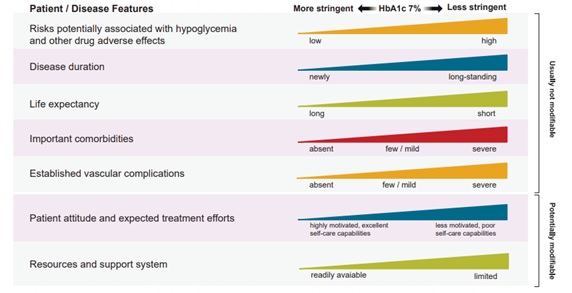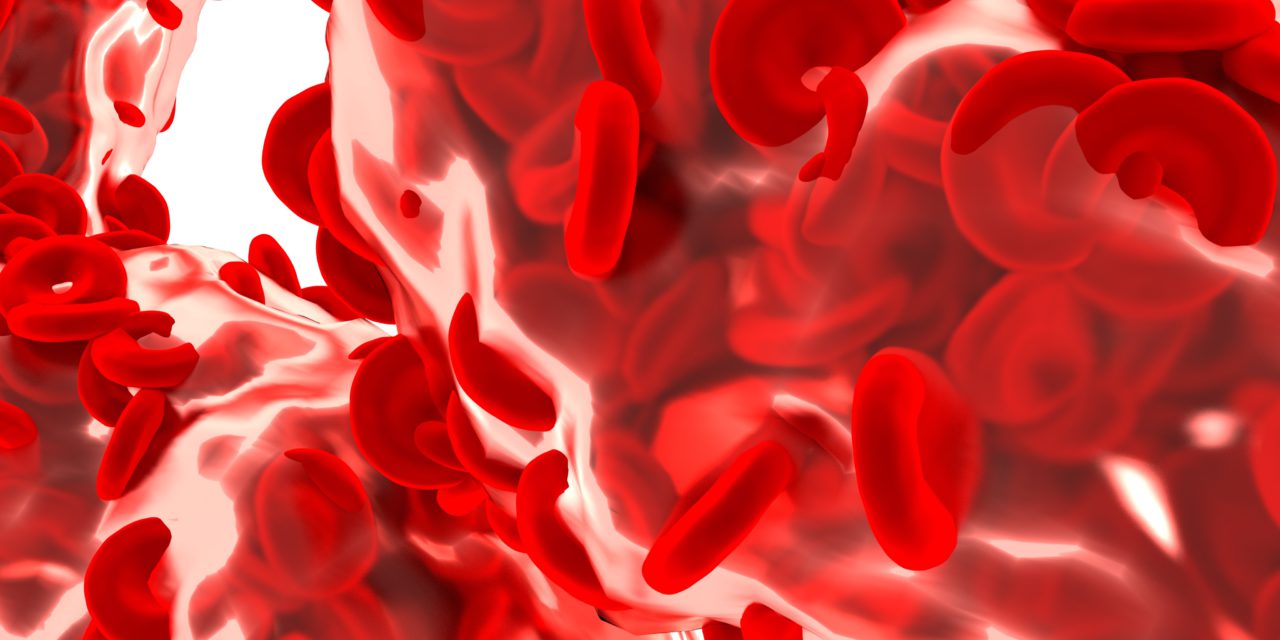Introduction of HbA1c Test
HbA1c test is a blood test which provides information about the average level of blood glucose or sometimes also known as blood sugar, over the past 3 months. This is performed to diagnose type 2 diabetes and pre-diabetes. The HbA1c test is also considered as the primary test performed for the management of diabetes. HbA1c ≥ 6.5%(48mmol/mol) is one of the important criteria for diabetes diagnosis.
Normal HbA1c range is 4.0-5.7% (20-39 mmol/mol), while 5.7-6.4% (39-46 mmol/mol) is considered as prediabetes.

HbA1c Goals
Depicted are patient and disease factors used to determine optimal HbA1c targets. Characteristics and predicaments toward the left justify more stringent efforts to lower HbA1c those toward the right suggest less stringent efforts.

HbA1c Goals
HbA1c Testing Frequency
Recommendations
- Perform the HbA1c test at least two times a year in patients who are meeting treatment goals (and who have stable glycemic control).
- Perform the HbA1c test quarterly (every 3 months) in patients whose therapy has changed or who are not meeting targeted glycemic goals.
- Point-of-care testing for HbA1c provides the flexibility for more hassle-free testing and timely treatment
Studies have shown that people with diabetes can reduce the risk of diabetes complications by keeping HbA1c levels below 7 percent.
There are two large-scale studies conducted for understanding Diabetics, the UK Prospective Diabetes Study (UKPDS) and the Diabetes Control and Complications Trial (DCCT). Key findings from these two studies have demonstrated that improving HbA1c by 1% (or 11 mmol/mol) for people with type 1 diabetes or type 2 diabetes cuts the risk of microvascular complications by 25%.
Microvascular complications include:
- Retinopathy
- Neuropathy
Research has also shown that people with type 2 diabetes who reduce their HbA1c level by 1% are:
- 19% less likely to suffer cataracts
- 16% less likely to suffer heart failure
- 43% less likely to suffer amputation or death due to peripheral vascular disease
HbA1c Limitation
HbA1c does not provide a measure of glycemic variability or hypoglycemia. For patients prone to glycemic variability, especially patients with type 1 diabetes or type 2 diabetes with severe insulin deficiency, glycemic control is best evaluated by the combination of results from HbA1c and SMBG (Self Monitoring Blood Glucose) or CGM (Continuous Glucose Monitoring). HbA1c may also confirm the accuracy of the patient’s meter (or the patient’s reported SMBG results) and the adequacy of the SMBG testing schedule. If your HbA1c blood test result is higher than recommended, it’s important to take steps to improve control. Talk to your healthcare team for suggestions and support.
Disclaimer: Above information and contents are only for knowledge and references, are not meant for initiating self medication. For any health issue, we strongly advise to consult a health care professional.
References
- Diabetes Care Volume 41, Supplement 1, January 2018
- Association of glycaemia with macrovascular and microvascular complications of Type 2
- Diabetes: prospective observational study. British Medical Journal 2000; 321: 405-412.
Image by Narupon Promvichai from Pixabay









